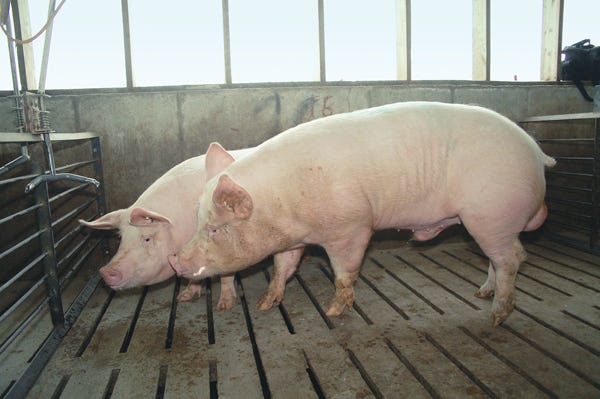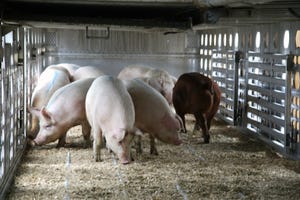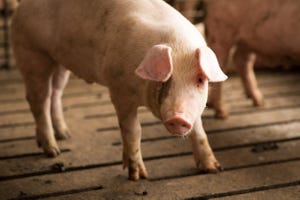Heat Detection
August 15, 2012

<p> In the natural mating environment, the boar has free access to the sow or gilt, which allows him to stimulate her with sight, sound, smell and touch. The boar’s role is to elicit a standing response whether she is artificially inseminated or bred by natural service. Early in the stimulation process, the boar secretes pheromones (a chemical secretion; scent), which stimulates the release of oxytocin in the estrus female. The oxytocin release causes surging contractions in the female’s uterus, which aids in semen transport, and strong muscle contractions expressed as a standing reflex.</p>
In the natural mating environment, the boar has free access to the sow or gilt, which allows him to stimulate her with sight, sound, smell and touch. The boar’s role is to elicit a standing response whether she is artificially inseminated or bred by natural service. Early in the stimulation process, the boar secretes pheromones (a chemical secretion; scent), which stimulates the release of oxytocin in the estrus female. The oxytocin release causes surging contractions in the female’s uterus, which aids in
semen transport, and strong muscle contractions expressed as a standing reflex.
When artificial insemination is used, it is imperative that the stockperson learn to simulate the actions of the boar. The more the boar is allowed to stimulate the female, the greater the chances of producing a standing response. When stimulation is provided effectively, estrus lasts longer and ovulation is greater.
The expression and duration of estrus is affected by many factors, including age/parity of females, season of the year, genetic composition, body condition, nutrition and previous exposure to a boar.
The display of estrus typically lasts no more than 48 hours in gilts, 38-64 hours in sows, although there is variation between farms. The “locked up” periods of standing heat last 5 to 15 minutes, depending on the level of stimulation received, the energy reserves of the female, and the time elapsed since last standing heat and the subsequent refractory period. Ovulation will occur from 36 to 42 hours after the onset of estrus – sooner in gilts than sows. The best time to inseminate is 12-24 hours after first standing heat.
You May Also Like



